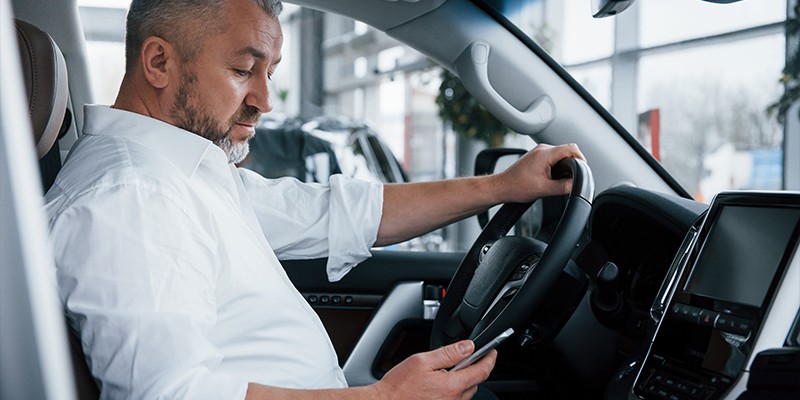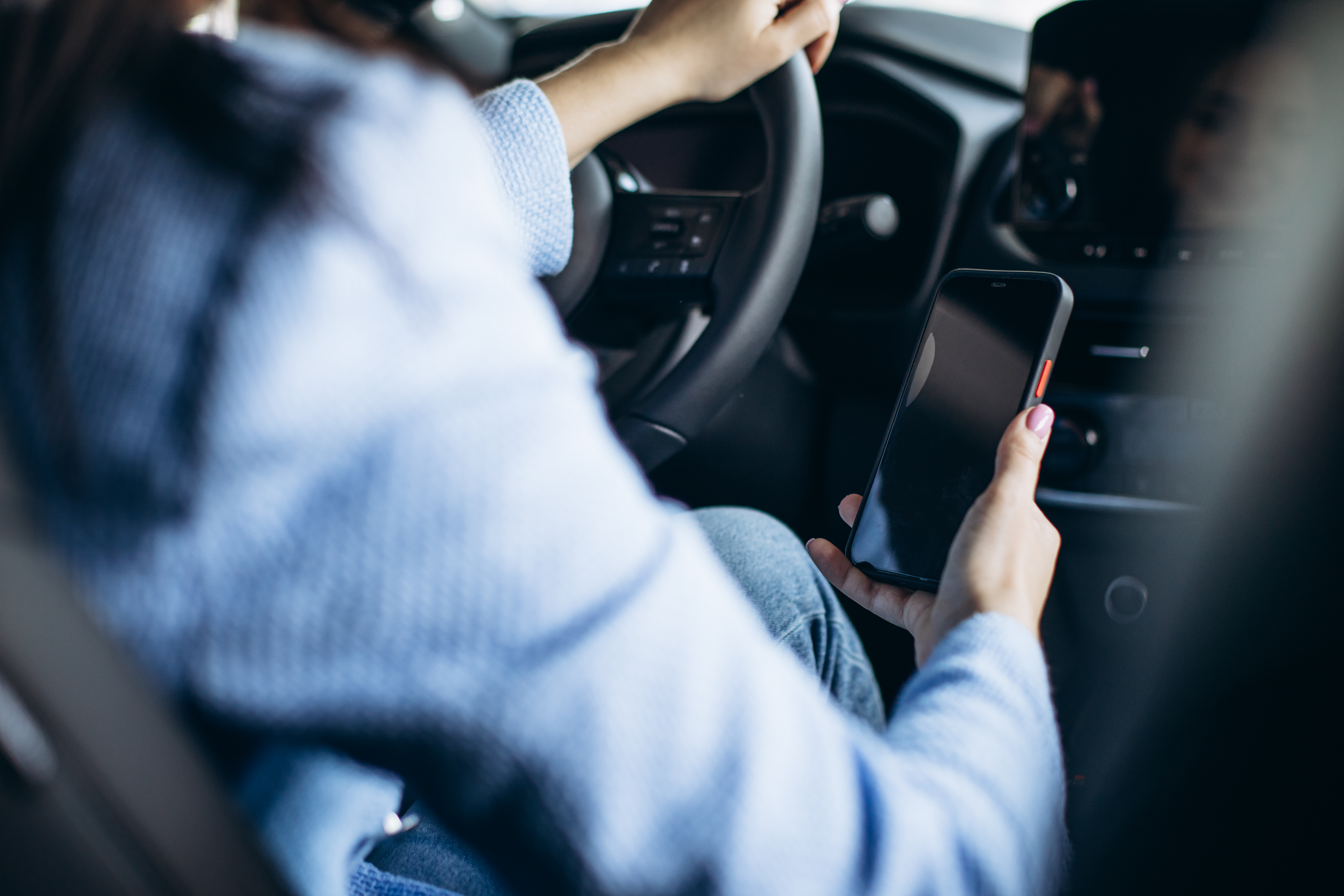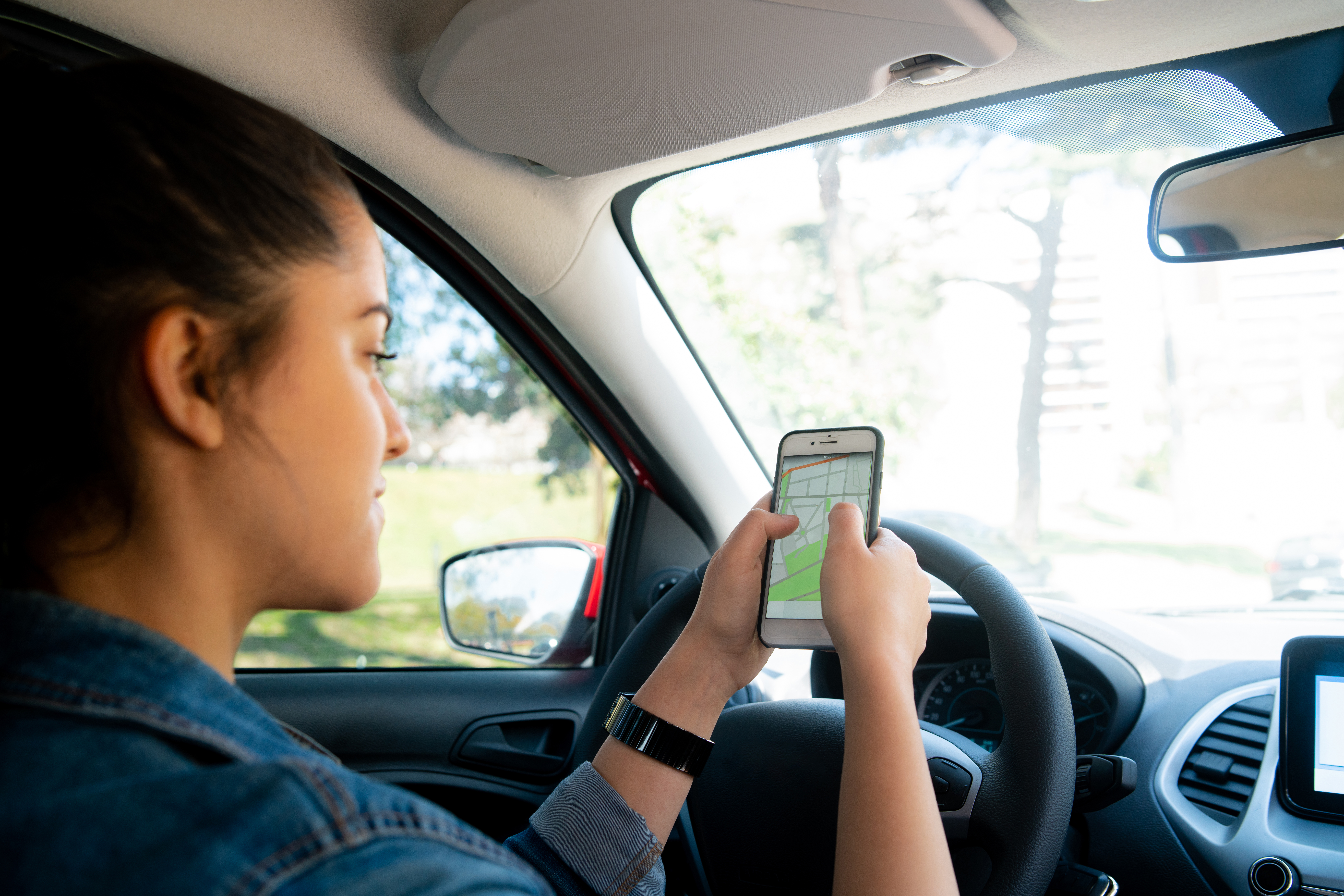Smartphones in cars: the UK law on using phones and sat-navs when driving
Smartphones in cars: the UK law on using phones and sat-navs when driving

What are the rules around using mobile phones when driving? We explain what is and isn't illegal.
After a prolonged consultation by the Government, a change in the law came into effect in April 2021 to make it illegal for motorists to hold their mobile phones while behind the wheel.
The consultation took place after a driver successfully reasoned in court that he wasn’t using his smartphone for communication and had recorded a collision.
After this change in law, it is now unlawful for drivers to hold a mobile phone for any reason while they are driving. This law also applies to passengers teaching or looking after a learner driver.
The rules allow motorists to interact with their phones using hands-free access by using voice commands or a Bluetooth headset. Drivers can touch their phone screen as long as the handset is mounted securely on the windscreen or dashboard. For example, you can interact with the phone’s built-in sat-nav system, providing the phone is securely mounted. However, there is an exception. If a driver is distracted by their hands-free device for long periods, they risk being charged with driving without due care and attention, which could lead to receiving six penalty points on their licence and a £200 fine.

Can drivers use their phones while the car is stationary?
Although the rules still apply when a driver is stopped at traffic lights or stuck in a traffic jam, the Government has also acknowledged that motorists often use mobile phones to make contactless payments. In this case, the law contains an exemption that allows motorists to pay for services and goods from their seats - such as at a road toll booth or a drive-through restaurant, providing the vehicle is stationary.

What about using other devices such as infotainment systems?
The law currently does not have a specific offence for instances where a driver uses technology that is fixed to the vehicle, such as an infotainment system or sat-nav. However, the offences of dangerous driving and careless driving can be applied by the police if they have clear evidence that a motorist has been unduly distracted by an in-car function that causes the standard of driving to fall below a competent standard.
Motorists who are prosecuted for careless driving could receive a penalty ranging from three to nine penalty points or possibly a ban from driving.
Drivers convicted for dangerous driving would receive a mandatory minimum driving ban of 12 months and the possibility of risking a prison sentence.
While the above offences are normally used when there is evidence of poor driving that could lead to an accident, the police also have the choice of deterring a driver from being distracted by an infotainment system by charging them with an offence of ‘not being in proper control of a vehicle’. This offence carries three penalty points and a fine.
Other news articles you may wish to read:
- Eight important Highway Code changes take effect on 29th Jan 2022
- Benefits of driving an electric car
- Benefits for employers who install electric vehicle charging points
- Electric vehicle running costs explained
- Our Top 10 electric cars to lease
- Electric cars: deadline looming for claiming home charging grant
- Connected Kerb to install 190,000 electric vehicle chargers by 2030
- Tesla to open up their Supercharger network to other EVs
- New homes and offices to have chargepoints for EVs by 2022
